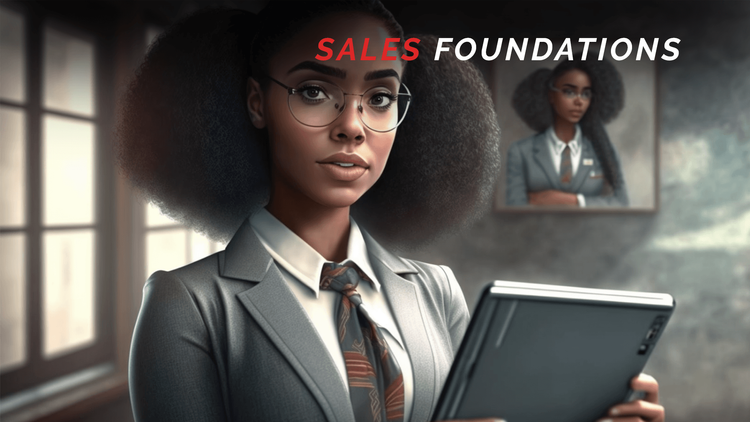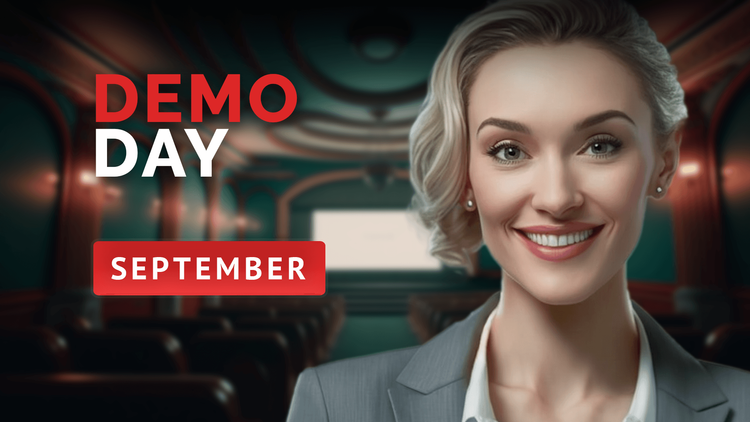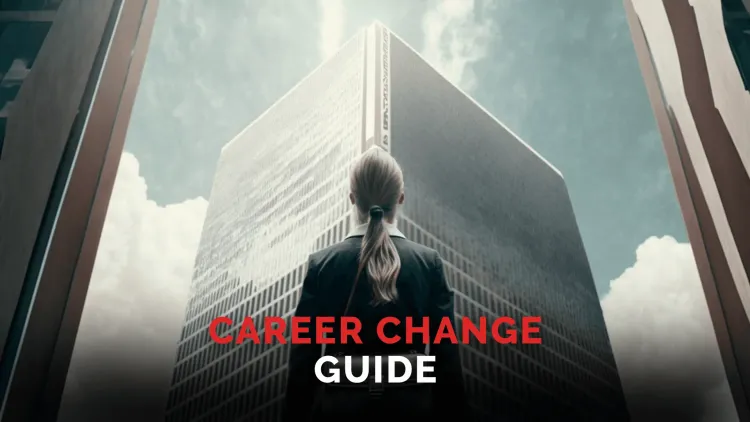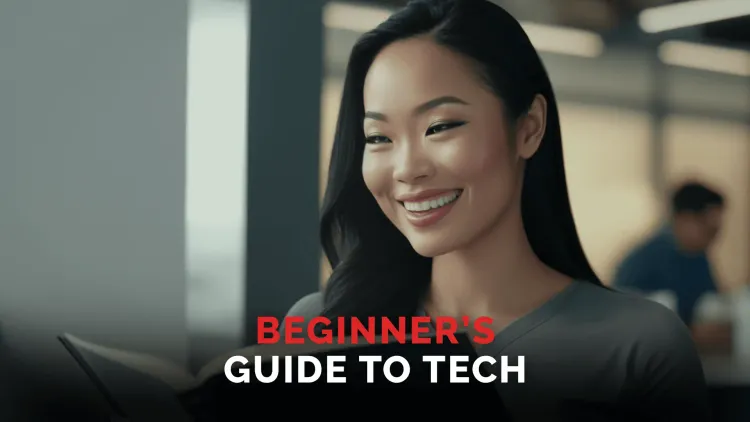Sales Foundations
A free online course delivering a candid look at the state of software sales, as the buyer's journey changes the role of SDR's and AE's.

Aug 23, 2022
New to software sales or looking to refresh your skills and strengthen your sales foundations?
This free online course takes a candid look at the state of software sales, as the buyer's journey changes the role of SDR's and AE's. With sales rapidly changing and organizations clamouring for position in their niches, a strong sales rep can help their company stand out. Those sales reps are the ones who understand that building strong foundations, using the current trends, positions you well for success. Here's a preview of what's included in Sales Foundations:
Sales Foundations Course Modules
- Stakeholders and Today's Buyers Journey (Sample Below)
- Sell To A Business, Not Just Your Buyer
- ICP and Buyer Personas In Today's Buyers Journey
- Spending Time On The Right Opportunities
- Enabling Conversational Fluency
- Conversational Fluency At Events
Stakeholders And Today's Buyers Journey
Interview Transcript
Donna Litt:Hello, and welcome to theKiiteAcademy. My name is Donna, and I'm super excited to be here today filming our very first module for sales foundations. I'm with Joseph Fung, CEO of Kiite. And we'll be talking about stakeholders and today's buyer's journey. Joseph, I'd love it if you could introduce yourself.
Joseph Fung:Sure. I'm co-founder and CEO of Kiite, repeat tech founder. So I've had the chance not just to sell software over many, many years, but sell a couple of companies, and looking forward to sharing a little bit about stakeholders in the buyer's journey with you.
Donna Litt:Awesome. So let's start really easy. What is a stakeholder? And what is the buyer's journey more importantly?
Joseph Fung:So the buyer's journey when we think about it, and it's great, a level-set on terminology, so thank you for asking. Very often when we speak about selling, and we're teaching selling, we anchor it on yoursales processand methodology, for a lot of companies that start with things like discoverydemo, you know, scoping, but when we think about selling more strategically, we shouldn't be thinking about it in the frame of mind of how do I sell, we should instead be thinking about it on how someone buys. And a great mental frame of reference to you is something like the hero's journey. You know, the hero's journey doesn't start with combat and adventure. It starts with, you know, getting ready awareness of the adventure convincing to participate, and then embarking on it. And there's a direct analogy between that and a buyer's journey.
Donna Litt:Okay, awesome. So there's a clear difference between a seller and a buyer and the way they think about it. If you could elaborate a little bit more on that, that would be really, really helpful.
Joseph Fung:Totally. So if you're a seller, your first interaction with a customer is when they call you up, they drop an email or you reach out to them. The reality is their journey has started much, much earlier, especially in today's B2B selling world. Most of the buying process has happened before they even get in touch with you. So one of the classic frameworks thinks about awareness, you know, first awareness that you have a problem that there's a pain point. And then there's the actual, you know, exposure, the research, what are the myriad different solutions available? And then only once they start digging into specific solutions do they reach out to a company. That's typically where a salesperson will meet a customer. But already all of that awareness, all of that research has already happened. So to get the full buyers' journey, you need to think about it from much earlier in their buying process before they even talk to you. And then candidly, you need to think about it much beyond your interactions once they become a customer and you're rotating them.
Donna Litt:That makes a lot of sense. Now putting my seller's hat on how on earth am I going to know what a buyer has done before they talk to me? How do I figure that out?
Joseph Fung:There's a ton of different ways. Some of them are technological. If you're fortunate enough to have the right sales automation system, marketing automation system, you'll get some of that information. You'll find out if they've been on your website, if they've downloaded a white paper, if they've attended your events that will give you some helpful context. If, however, it's a brand new contact or someone you're reaching out to, you don't have any of that information at all. And so the first step of your discovery process is actually about trying to ramp yourself up to understand where they are in the journey. A lot of reps make the mistake of using that first cold call to pitch their product, to pitch their value. The reality is that the first conversation needs to be about figuring out where they are on that buyer's journey so that the rest of your interactions are the right size to where they are.
Donna Litt:Awesome. And so a journey that says to me that there is, you know, a bit of an adventure along the way, you've talked about the hero's journey. Talk me through what an actual journey might look like. Is it from point A to point B to point C? What if I encounter your solution at a different point in the process?
Joseph Fung:That's a fantastic, fantastic question because very often when we map out a sales process, we have this very neat cycle where one step follows the next, they download a trial of your software, you have a call with them, they get excited, you have a demo with them that leads to pricing. And the reality is the buyer's journey is nowhere near as linear. If you do a quick search for the buyer's journey, any images on Google, you'll find a rat's nest maze of the path. Because the reality is, it is like an adventure, and they get distracted, and they're side quests. Do you ask what it's actually like? You might have a buyer who's looking for a piece of marketing software, and it started because a VP in their organization read a great article, handed it off to them, and said, find us a solution like this. That employee now realizes, Oh, there's this new area, I need to quickly ramp up, and they read a bunch of blogs, maybe yours, maybe a competitor. Maybe they download a trial, but they probably downloaded six trials. They're not even buying at this point. They're just trying to build their expertise. So they can look smart to that VP. And if you think about that challenge and the journey, they're on if you're a sales rep, and you try and get them into a deal and negotiate pricing at that point, they're nowhere ready for that. And so understanding where that individual is along their journey, who else is involved? All of that is a key step of understanding that buyer's journey.
Donna Litt:Got it, understood. So that does a really fantastic job of describing what the journey looks like. But tell me about this idea of stakeholders. Who are they? What do they mean in this buyer's journey?
Joseph Fung:Absolutely. Much like using our adventure analogy, you know, every adventure has assistance or a team of fellowships, perhaps, and each one has a unique characteristic. It's good to think about it that way. When you're speaking to a buyer. Every buyer, especially in aB2B sales cycle, has a big cast of characters. Now, if you're selling something nontechnical, a consumer good, a car perhaps, most of the stakeholders might walk in with you. Maybe it's a couple, you know, a pair of buyers and you have everybody involved in the decision. Maybe they have a child who's at the babysitter who's influencing it, but not really. That's very, very different than a B2B software role. So if we come back to my first example, the buyer who was doing that research is maybe an individual contributor or looking for that marketing software. But the stakeholders include the VP who assigned the task. Maybe that individual contributor doesn't report to that VP, directly, they report to a director somewhere else, so that directors involved, that individual contributor needs to look good to the VP, but also wants to look good to their director, and wants to make sure as they're moving information along, they're not circumventing their director, and there's all these dynamics. When they get further along. There's their Head of Finance. They move further along. There's someone from IT and security, and at every step along the way. Although as a salesperson, I'd be interacting with that one person. The reality is there was a whole cast of characters right behind them waiting to influence and impact this deal.
Donna Litt:It sounds exhausting.
Joseph Fung:Yes, there's a lot to do.
Donna Litt:Yeah. And so how on earth can a salesperson navigate these various stakeholders, those relationships? How do they manage them?
Joseph Fung:There's a couple of different things to keep in mind. The first is research. So always keep that questioning frame of mind involved, who else is involved in the buying decision? Do you need to get IT to sign off? Is finance going to need to approve this? Do they have a buying threshold? Asking open-ended questions? So tell me about your team, tell me about your organization and always looking to fill in the blanks. I see sales reps using everything from online tools, that'll give them an organization chart to paper and whiteboard organization charts, and at the end of the day, either of those can work, but deliberately actively trying to map out everybody that's involved, and always refreshing it. If you have a long sales cycle, people change that VP loses, loses theirjob or gets brought in, they split the org and now your buyers reporting to somewhere else. So always mapping it out. That research mindset is a really big thing. The second thing is thinking about what that relationship is between your lead buyer, your point of contact, and the rest of the stakeholders. So for example, knowing that there's a director of finance, who's going to sign off on the purchase is a good starting point. But understanding how that buyer's relationship with that VP of finance matters. That's the right way to think about it. Do they have to impress them? Is there an antagonistic relationship? Is that person frustrated and you know, they're strapped for time and making sure your buyer looks good? You know, is being cast in the right light, that sort of way to think about it.
Donna Litt:Wow, it definitely sounds like an exciting challenge because navigating those interpersonal relationships and applying those emotional intelligence skills is very satisfying, but also very difficult to do. I'm so excited to be digging into that interview in our next modules. Thank you so much for joining us today for sales foundations, and thank you, Joseph, for sharing all of that with us.
Joseph Fung:Thank you, Donna.
Donna Litt:Stay tuned for the next module in sales foundations, Sell to a Business and Not Your Buyer”.
We hoped you enjoyed this module on Sales Foundations — Stakeholders And Today's Buyers Journey. For more Sales Foundation modules, please visit Uvaro On Demand.





